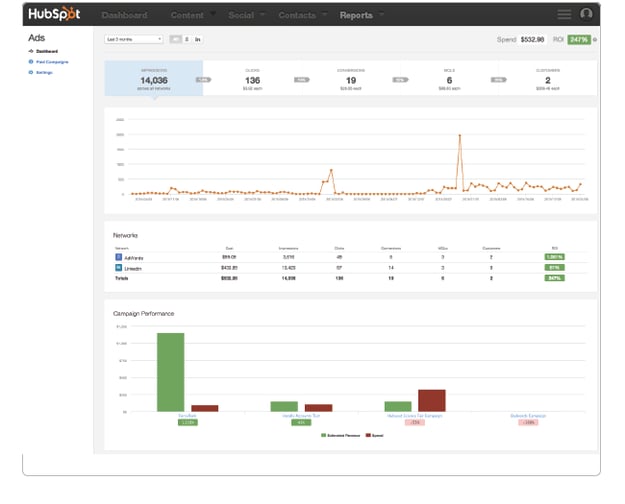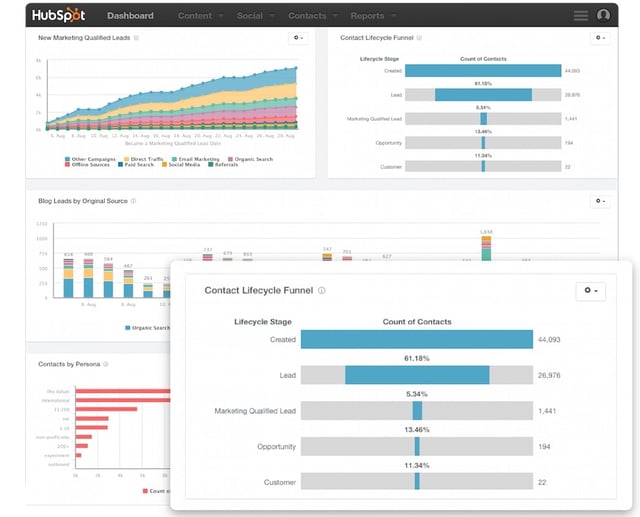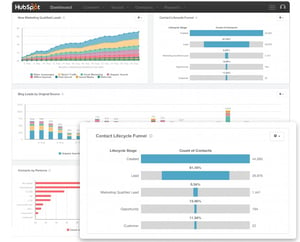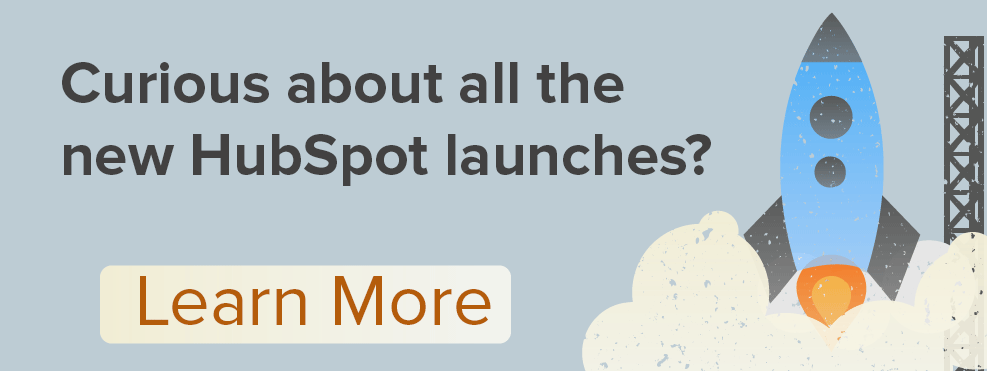“HubSpot is at the intersection of technology and philosophy.” — Dharmesh Shah, co-founder and CTO, HubSpot

Dharmesh (@dharmesh) opened his INBOUND 2015 keynote with co-founder Brian Halligan (@bhalligan) with this simple truth. I couldn’t agree more—that the company is at this crossroads, and that its technology is inexplicably tied to the ideology, practices and desires of its users.
Taking it a step further, I’d argue that in the case of the Boston-based SaaS company with more than 13,000 customers worldwide, its product is a direct reflection of the behaviors and preferences of consumers today.
HubSpot’s New Features—And What They Say About Inbound
HubSpot was born out of inbound, or a practice that rejects the interruptive, pushy tactics of the past and is rooted in helpful, permission-based marketing and sales. (Or as HubSpot calls it, “marketing that people love.”)
As the ideology matures, so too must the product. Marketers and businesses believe in inbound, but still struggle to tie activities to performance.
The new features unveiled at INBOUND 2015 are clear indicators of what buyers want, what marketers need, and where the inbound movement is headed. Read on for what you can expect.
1. Inbound marketers will spend less time managing their marketing, and more time creating marketing that people love.
This one is a no-brainer. Marketers want to spend less time on the mundane—administrative tasks, double-checking formatting, running reports, managing their website—so they can spend more time on their craft. This is clearly a common pain point that HubSpot aims to alleviate through its growing suite of tools.
The common WYSIWYG (What You See Is What You Get) editor of CMS platforms (that all too often isn’t what you get) has been replaced by HubSpot’s new What You See Is What It Is (WYSIWII) editor. In other words, in-line editing eliminates any discrepancy between the changes you’re making, and the end product.
Other features are now baked-in too, like easy-to-connect SSL certification and a rapidly expanding network of integration partners. Leadin, the new freemium tool born out of HubSpot Labs, makes it easy for SMBs to add lead forms, pull in visitor context and more (yes, it’s really free).
With more data, more technology and more choices than ever before, tools and strategies that get marketers back to doing their jobs are essential.
2. Inbound marketers will find new ways to leverage paid media.
I know, I know—paid sounds very un-inbound. It can be interruptive, irrelevant and just plain obnoxious. HubSpot thought the same thing. But as Dharmesh explained, they “got over themselves” and recognized the role paid can play even in an inbound marketing strategy.

What this means for HubSpot is the ability to create search and social ad campaigns right inside the product, giving you a unique, closed loop view of your advertising ROI. What this means for marketers is to challenge conventional assumptions about advertising. Is it possible to create ads that people love? The answer is yes—when they are highly targeted, highly relevant and immensely helpful.
To run your own ads through the inbound litmus test, ask yourself: Are you helping the user do the thing they are trying to do or buy the thing they are clearly looking buy?
3. Inbound marketers will combine subjective analysis with objective data and algorithms.
One of the most exciting features (in my opinion) was the announcement of predictive lead scoring. What if you could know the commonalities of your best—and worst—leads?
The tool flips conventional lead scoring strategy on its head, and starts with actual lead and customer data in the HubSpot portal. Algorithms assess your customers’ shared characteristics and behaviors, then compare them to your existing contact database to qualify leads. Predictive lead scoring can be run alongside traditional lead scoring, which applies point values based on manually selected criteria.
The tool is more than handy; it’s indicative of a rising trend in marketing technology (martech) strategy. Larger data sets—and algorithms powerful enough to mine them—can now automate elements of marketing strategy. How can marketers play nice with these new, weak AI toolsets?
The answer is: we’re still learning. But for now, marketers should leverage algorithms’ objectives insights, and marry them with the subjective context, creativity and critical thinking that only humans can provide.
4. Inbound marketers will prove their worth on the bottom line.
HubSpot’s new Reporting Add-On (shown below) consolidates its reporting capabilities into a single, customizable screen. The add-on includes a set of template reports or the ability to create your own report from scratch.

The Ads Add-On mentioned above visualizes paid media performance with the progression from impressions and clicks to conversions, MQLs (marketing qualified leads) and customers. The screen even has a green box highlighting the ROI of paid media spend.
With all of these tools, marketers no longer have an excuse. We must make a business case for our efforts, and show how brand awareness, content marketing and social media translate into cold, hard cash.
However, many marketers don’t know where to start when it comes to calculating ROI. If you’re one of them, check out my colleague Mike Kaput’s (@mikekaput) post, The Road to Marketing ROI: A Beginner’s Guide to the Metrics that Matter.
The Full List of HubSpot Product Updates
Want to learn more? Click below for more information on all of the new updates announced at INBOUND. For more on the future of inbound marketing, stay tuned for our team’s recaps of the most thought-provoking sessions.
Images via HubSpot

%20Logo_BlueOrange_Trademark.png?width=800&height=269&name=Ready%20North%20(RN)%20Logo_BlueOrange_Trademark.png)




.jpg?width=300&name=Services%20Hub%203%20(3).jpg)



COMMENTS